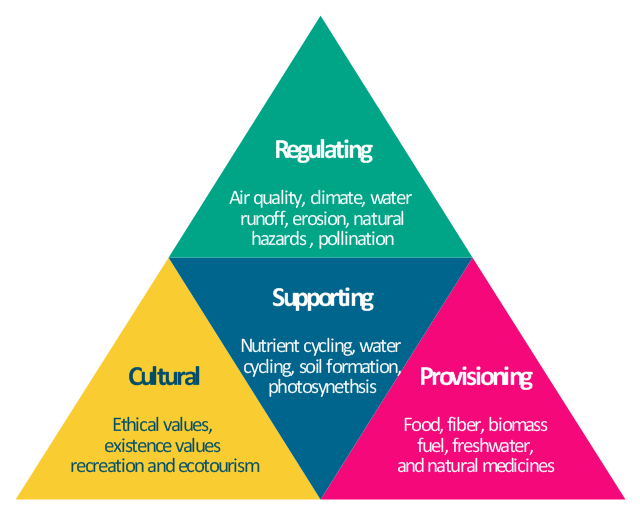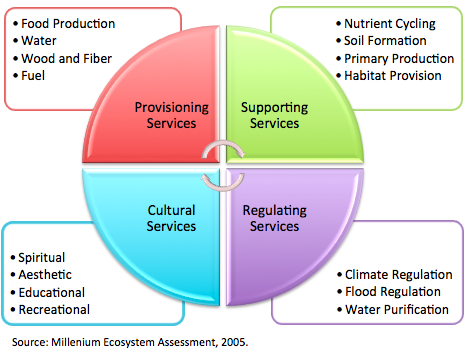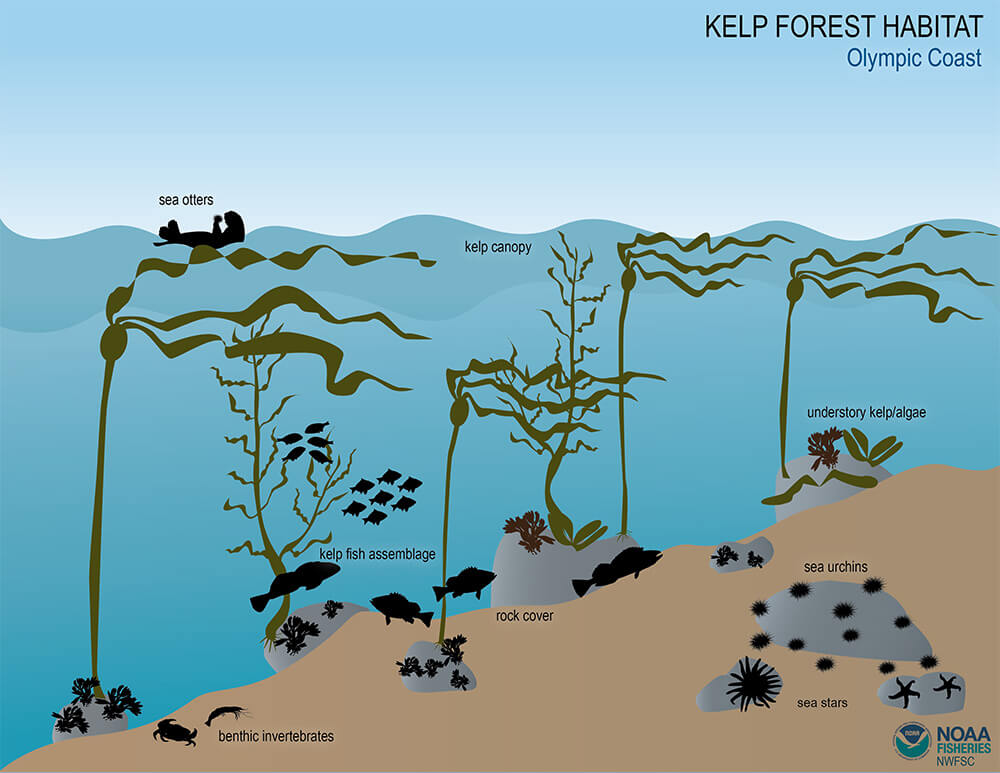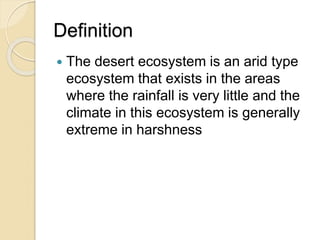Topic ecosystem services categories: Explore the vital roles within ecosystem services categories, revealing how nature sustains and enriches our lives, paving the way for a sustainable and harmonious future.
Table of Content
- What are the four categories of ecosystem services commonly mentioned in literature?
- Understanding Ecosystem Services
- Four Main Categories of Ecosystem Services
- Provisioning Services: Essentials for Life
- Regulating Services: Nature"s Balancing Act
- Cultural Services: Spiritual and Recreational Benefits
- Supporting Services: The Foundations of Ecosystem Health
- YOUTUBE: APES Notes 2.2 Ecosystem Services
- The Importance of Ecosystem Services to Human Well-being
- Challenges and Threats to Ecosystem Services
- Conservation and Sustainable Management Strategies
- Future Directions and Research in Ecosystem Services
What are the four categories of ecosystem services commonly mentioned in literature?
The four categories of ecosystem services commonly mentioned in literature are:
- Provisioning Services: These are the products obtained from ecosystems, such as food, water, and raw materials.
- Regulating Services: These services include processes that help regulate the environment, such as climate regulation, water purification, and natural disaster mitigation.
- Cultural Services: These services refer to the non-material benefits that people obtain from ecosystems, such as spiritual and recreational benefits.
- Supporting Services: These services are necessary for the production of all other ecosystem services, such as soil formation, nutrient cycling, and biodiversity maintenance.
READ MORE:
Understanding Ecosystem Services
Ecosystem services are the benefits that nature provides to humanity, playing a crucial role in supporting our survival and quality of life. These services are fundamental to the functioning of the Earth"s ecosystems and include a wide range of benefits, from clean water and air to pollination of crops and climate regulation.
- Provisioning Services: These include the supply of food, fresh water, wood, fiber, and genetic resources.
- Regulating Services: Services that regulate ecosystem processes such as climate regulation, flood control, disease regulation, and water purification.
- Cultural Services: Non-material benefits obtained from ecosystems such as recreation, aesthetic enjoyment, and spiritual fulfillment.
- Supporting Services: These services underpin all other ecosystem services by maintaining biodiversity and the production of ecosystem goods, such as soil formation and nutrient cycling.
The concept of ecosystem services emphasizes the interdependence of humans and natural ecosystems and highlights the importance of conserving and restoring natural habitats and ecosystems to ensure the continued provision of these vital services.

Four Main Categories of Ecosystem Services
Ecosystem services are the myriad benefits that nature provides to society, essential for human survival and well-being. These services are broadly classified into four main categories:
- Provisioning Services: The products obtained from ecosystems, including food, fresh water, wood, fiber, genetic resources, and medicines.
- Regulating Services: The benefits obtained from the regulation of ecosystem processes, such as climate regulation, flood control, disease regulation, water purification, and pollination.
- Cultural Services: The non-material benefits people obtain from ecosystems through spiritual enrichment, cognitive development, reflection, recreational activities, and aesthetic experiences.
- Supporting Services: Those services necessary for the production of all other ecosystem services, including soil formation, photosynthesis, nutrient cycling, and water cycling. These underpin the provision of provisioning, regulating, and cultural services, thereby maintaining the health and resilience of ecosystems.
Understanding these categories helps in appreciating the full value of ecosystems to humanity and underscores the importance of sustainable management and conservation practices to maintain these vital services.
Provisioning Services: Essentials for Life
Provisioning services are the products provided by ecosystems that are essential to human survival and well-being. These services include:
- Food: A wide variety of foods are produced by ecosystems, including fruits, vegetables, grains, livestock, and fish, sustaining the dietary needs of humans worldwide.
- Water: Freshwater systems such as rivers, lakes, and aquifers supply water for drinking, irrigation, and sanitation.
- Raw Materials: Ecosystems provide raw materials such as wood for construction and fuel, fibers for clothing, and other materials for manufacturing and craft.
- Medicinal Resources: Many pharmaceuticals are derived from compounds found in plants and animals, highlighting the importance of biodiversity for health and medicine.
These services are not just commodities but are fundamental to the fabric of human society, underpinning economies and cultures by providing the raw materials for food, shelter, medicine, and livelihoods. The sustainable management of provisioning services is crucial to ensure that these resources remain available for future generations.

Regulating Services: Nature"s Balancing Act
Regulating services are critical ecosystem functions that maintain the balance and health of the earth"s environments. These services include:
- Climate Regulation: Ecosystems play a key role in regulating the earth"s climate by controlling greenhouse gas concentrations. Forests, oceans, and wetlands absorb carbon dioxide, helping to mitigate climate change.
- Flood Regulation: Natural landscapes like forests and wetlands absorb rainfall, reducing the risk and severity of floods.
- Disease Regulation: Healthy ecosystems can control the spread of certain diseases by supporting a variety of species that either prey on disease vectors or compete with them.
- Water Purification: Ecosystems such as wetlands filter pollutants from water, improving its quality for drinking, agriculture, and recreation.
- Pollination: Many plants rely on insects, birds, and bats for pollination, which is essential for the production of fruits, vegetables, and seeds.
These services are indispensable, providing natural solutions to environmental challenges and contributing to the stability and resilience of ecosystems. The preservation and enhancement of regulating services are crucial for sustaining our planet"s health and for the well-being of all its inhabitants.
Cultural Services: Spiritual and Recreational Benefits
Cultural services are the non-material benefits people obtain from ecosystems, enriching human culture, spiritual life, and recreational activities. These services include:
- Aesthetic Appreciation: Enjoyment of the natural beauty of landscapes, flora, and fauna, which inspires art, folklore, and national pride.
- Recreational Activities: Opportunities for outdoor activities such as hiking, bird watching, camping, and fishing that contribute to physical health and well-being.
- Spiritual and Religious Values: Many cultures find spiritual significance and inspiration in natural features such as rivers, mountains, and forests.
- Educational Value: Ecosystems serve as living classrooms, offering invaluable lessons on biology, ecology, and conservation.
- Cultural Heritage: Ecosystems are integral to the cultural identity and heritage of communities, preserving traditional knowledge and practices.
These cultural services foster a deep connection between humans and nature, promoting mental and emotional well-being. They remind us of our shared heritage and the importance of conserving our natural environments for future generations.

Supporting Services: The Foundations of Ecosystem Health
Supporting services are fundamental to the maintenance of all other ecosystem services, ensuring ecosystem health and stability. These services include:
- Soil Formation: The process by which organic and inorganic materials are broken down to create soil, a critical medium for plant growth.
- Nutrient Cycling: The movement and exchange of organic and inorganic matter back into the production of living matter, ensuring the availability of nutrients necessary for ecosystem productivity.
- Photosynthesis: The conversion of sunlight into energy by plants, producing oxygen and forming the basis of most food chains.
- Water Cycling: The continuous movement of water on, above, and below the surface of the Earth, which plays a key role in climate regulation and the availability of fresh water.
- Biodiversity Maintenance: The variety of life in the world or in a particular habitat or ecosystem, essential for resilience and adaptation to changing environmental conditions.
By maintaining the conditions for life, supporting services underpin the provisioning, regulating, and cultural services that ecosystems provide, highlighting the interconnectedness of nature"s processes. The conservation of these foundational services is crucial for sustaining biodiversity, ecosystem function, and human well-being.
APES Notes 2.2 Ecosystem Services
Biodiversity: Dive into the mesmerizing world of biodiversity and witness the incredible variety of life forms that coexist on our planet. Explore the beauty of nature and learn why protecting biodiversity is crucial for a sustainable future. Economic Value: Discover the hidden treasures behind the concept of economic value in our everyday lives. Uncover the significance of goods and services in driving economic growth and enhancing the quality of life for individuals and communities.
Valuation of Ecosystem Services Classes of Values
This video is a part of Conservation Strategy Fund\'s collection of environmental economics lessons and was made possible ...
The Importance of Ecosystem Services to Human Well-being
Ecosystem services are vital to human well-being, providing a foundation for our economy, health, and environment. These services are categorized into four main types: provisioning, regulating, cultural, and supporting services. Each plays a unique role in sustaining life and the quality of our existence.
- Provisioning Services: These include the direct products we obtain from ecosystems, such as food, water, timber, and medicinal resources. They are the building blocks of our nutrition, health, and industry.
- Regulating Services: Ecosystems regulate critical natural processes, including air and water purification, climate regulation, pollination, and disease control. These services help mitigate environmental hazards and are essential for a stable climate and clean environment.
- Cultural Services: Nature enriches our lives in non-material ways, influencing culture, recreation, mental health, and spiritual well-being. From recreational spaces to inspiration for art and education, the benefits are immeasurable.
- Supporting Services: These underpin all other ecosystem services, including soil formation, nutrient cycling, and the water cycle. Without these, ecosystems could not sustain life as we know it.
Wetlands, for example, are crucial ecosystems that provide a wide range of services, including water filtration, flood protection, and habitats for biodiversity. Despite their importance, wetlands are among the most threatened ecosystems. Their conservation and restoration are essential for maintaining the services they provide to people and the environment.
The concept of ecosystem services highlights the intrinsic connection between human well-being and the health of our planet. Recognizing and preserving these services are critical for sustainable development, economic stability, and the preservation of biodiversity.

Challenges and Threats to Ecosystem Services
Ecosystem services are under threat from a variety of factors that jeopardize their ability to support human well-being and biodiversity. Addressing these challenges is crucial for the sustainability of our planet"s life-support systems.
- Habitat Destruction: Urbanization, deforestation, and agriculture expansion lead to significant loss of natural habitats, reducing biodiversity and ecosystem functions.
- Climate Change: Altered weather patterns, rising sea levels, and increasing temperatures impact ecosystems" ability to provide services such as carbon sequestration and climate regulation.
- Pollution: Air, water, and soil pollution from industrial, agricultural, and urban sources degrade ecosystems, affecting water quality, fish stocks, and crop productivity.
- Invasive Species: Non-native species can outcompete native biodiversity, disrupting ecosystems and the services they provide, such as pollination and disease regulation.
- Overexploitation: Unsustainable fishing, hunting, and logging exceed the natural regeneration capacity of ecosystems, leading to resource depletion.
These challenges are interconnected, often amplifying each other and creating complex scenarios for conservation and restoration efforts. For example, habitat destruction and climate change can work synergistically, accelerating biodiversity loss at unprecedented rates. Similarly, pollution and invasive species can alter ecosystem dynamics, further reducing their resilience and functionality.
Positive actions, including sustainable management practices, conservation efforts, and policies aimed at mitigating climate change, are essential to safeguard ecosystem services. These actions not only protect the environment but also secure the foundation for economic development, human health, and cultural heritage.
Conservation and Sustainable Management Strategies
Effective conservation and sustainable management of ecosystems are crucial for preserving ecosystem services and ensuring that they continue to benefit future generations. This approach involves a variety of strategies designed to protect, restore, and enhance the natural environment.
- Protected Areas: Establishing and enforcing protected areas such as national parks, wildlife reserves, and marine sanctuaries to safeguard biodiversity and ecosystem services.
- Sustainable Resource Use: Implementing sustainable agriculture, fishing, and forestry practices to ensure that natural resources are used in a way that maintains ecosystem health over the long term.
- Restoration Projects: Engaging in ecosystem restoration efforts, such as reforestation, wetland restoration, and coral reef rehabilitation, to repair damage caused by human activity or natural disasters.
- Climate Change Mitigation: Reducing greenhouse gas emissions and enhancing carbon sinks through conservation practices, renewable energy adoption, and sustainable land management.
- Community Engagement and Education: Involving local communities in conservation efforts and providing education on the importance of ecosystem services and sustainable practices.
- Pollution Control: Implementing measures to reduce pollution, including stricter regulations on industrial discharge, waste management improvements, and promotion of cleaner production techniques.
- Legislation and Policy: Developing and enforcing laws and policies that promote conservation and sustainable use of ecosystems, including incentives for conservation and penalties for environmental degradation.
These strategies require coordinated efforts from governments, non-governmental organizations, the private sector, and individuals. By adopting a holistic and integrated approach to conservation and sustainable management, it is possible to balance human needs with the preservation of the ecosystems on which we all depend.

READ MORE:
Future Directions and Research in Ecosystem Services
As we advance into the future, the field of ecosystem services faces numerous opportunities for growth and development. The focus of research and the directions we take will be critical in addressing the complex environmental challenges of our time. Below are several key areas where future directions and research in ecosystem services are likely to concentrate.
- Integrated Assessment Models: Developing and refining integrated models that can accurately predict the impact of human activities on ecosystem services, enabling better decision-making and policy development.
- Valuation Techniques: Advancing methods for the economic, social, and cultural valuation of ecosystem services to better reflect their true value to society and inform sustainable resource management.
- Climate Change Effects: Investigating the impacts of climate change on ecosystem services, including how alterations in ecosystems can feedback into climate systems, to guide adaptation and mitigation strategies.
- Technological Innovations: Leveraging technology, including remote sensing, big data, and artificial intelligence, to monitor ecosystems and their services more effectively and in real-time.
- Restoration Ecology: Enhancing research on ecosystem restoration techniques to improve the recovery of degraded ecosystems and their capacity to provide essential services.
- Biodiversity and Ecosystem Function: Deepening our understanding of the relationship between biodiversity and the provision of ecosystem services to guide conservation priorities and strategies.
- Policy and Governance: Examining the effectiveness of various governance models and policy instruments in conserving and sustainably managing ecosystem services on local, national, and global scales.
- Social and Cultural Dimensions: Expanding research into the social and cultural aspects of ecosystem services, including community engagement, traditional knowledge, and the role of education in fostering sustainable interactions with nature.
The path forward will require interdisciplinary collaboration among scientists, policymakers, businesses, and communities. By embracing innovative research directions and integrating diverse perspectives, we can ensure the sustainable management and conservation of ecosystem services for the benefit of all.









